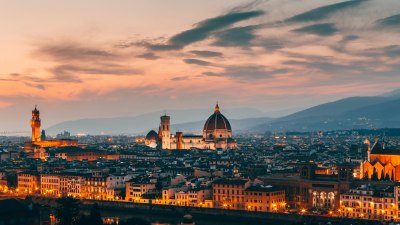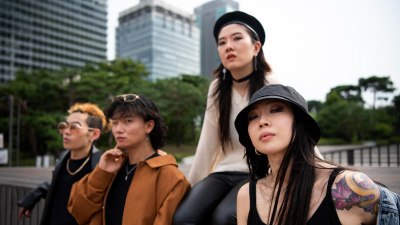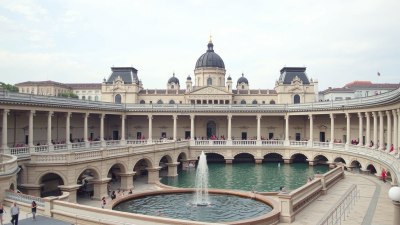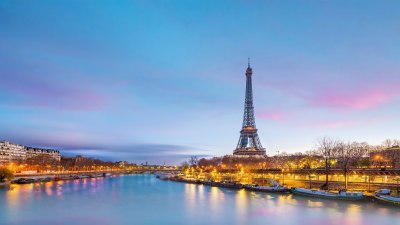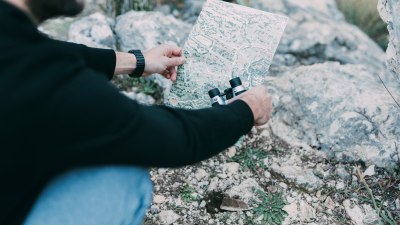Why Some of the Most Powerful History Lessons Happen Outside of Museums
Exploring the impact of history lessons in unconventional settings beyond traditional museums.

History has always been a cornerstone of our understanding of the world; it shapes our identity, informs our beliefs, and guides our actions. While museums are often considered the epicenters of historical knowledge, framing and preserving artifacts, there exist numerous alternative venues and methods through which profound historical lessons unfold. This article examines why some of the most potent history lessons happen outside traditional museum walls and reveals how these experiences can spark deeper connections to our past.
The Role of Personal Experience
One significant reason history lessons outside of museums resonate strongly is that they are often rooted in personal experience. Consider a local war memorial; when visitors learn about the lives of the individuals commemorated there, they aren't just learning about soldiers; they are accessing personal stories that evoke emotions, deepening their engagement with history. Through storytelling, oral histories, and personal accounts, history is rendered relatable, tangible, and relevant. These experiences provide context that textbooks and artifacts may lack.
Interactive Learning Environments
Another compelling factor is the interactive nature of non-museum settings. Sites like battlefields, historic homes, and even urban landmarks allow individuals to actively engage with history. Walking on the same ground where significant events took place creates a visceral connection to the past. Educational programs at these sites often incorporate hands-on activities, such as reenactments, workshops, or guided tours that encourage participant interaction. This engagement fosters critical thinking and enables learners to relate historical events to contemporary issues.
Community and Cultural Spaces
Community centers, cultural festivals, and other social gatherings frequently provide rich historical lessons. These spaces often reflect the histories and narratives of local populations, offering insights into the diverse tapestry of heritage and experiences. For example, a cultural festival might feature displays, performances, or talks about the history of the community it celebrates. Here, history transforms into a living, breathing entity, enriched by the narratives that allow participants to see themselves as part of a larger story.
Art as a Medium for History
Art is another powerful vehicle for conveying historical lessons outside traditional educational settings. Public art installations, murals, and performances can communicate complex historical themes in impactful ways. Consider a mural depicting scenes from a community's past or an interactive installation that invites viewers to reflect on their relationship to historical events. Artistic projects often attract diverse audiences, making history accessible and engaging while inciting thoughtful dialogue.
Digital Engagement and Virtual Experiences
The digital age has also transformed the landscape of historical education. With the advent of augmented reality (AR), virtual reality (VR), and digital storytelling, history can be experienced in innovative ways. Virtual museum tours, online archives, and educational apps bring history to life in ways that transcend physical space. For example, a mobile app might guide users through historical locations in their city, providing context and narratives that enhance their understanding of the past right from their smartphones.
Field Trips and Experiential Learning
Educational institutions are increasingly recognizing the value of field trips and experiential learning outside the confines of museums. Students visit battlefields, historic farms, or cultural sites as part of their curriculum, where they engage more dynamic learning experiences than traditional classroom settings often allow. These excursions underscore the principle that immersion in a historical context fosters curiosity and a deeper understanding than passive learning.
Historical Fiction and Literature
Literature, especially historical fiction, serves as another powerful conduit for learning history outside museums. Novels set in specific historical contexts, memoirs, and firsthand accounts portray experiences that resonate emotionally. They transport readers to different times and places, providing context to historical events that dates and timelines cannot fully convey. When readers connect with characters who experience historical events firsthand, they often feel compelled to delve deeper into the actual history behind those stories.
The Influence of Social Movements
Social movements, protests, and community activism can serve as dynamic platforms for historical learning. Activism often highlights historical grievances, celebrates movements for justice, and requires participants to engage with and advocate for change based on an understanding of history. Events like rallies, marches, or community discussions serve as a living history archive, emphasizing the lessons of the past intertwined with ongoing struggles for equality and justice.
Preservation of Indigenous Histories
Indigenous communities provide another compelling example of historical lessons manifested outside museums. Many Indigenous cultures prioritize oral history, passing down stories and teachings through generations. These narratives often emphasize connections to land, community, and identity, providing insight into historical themes that are frequently overlooked in traditional museum narratives. By engaging with Indigenous communities and respecting their storytelling traditions, people can access rich historical perspectives often excluded from mainstream narratives.
History Through Cuisine
Culinary traditions tell powerful historical stories as well, revealing cultural heritage, migration patterns, and historical events. Cooking classes, food festivals, and cultural meals often carry deep historical significance, allowing individuals to learn through the lens of food. For instance, exploring how African, European, and Indigenous influences blend in Southern cuisine can reveal insights into colonial history, social dynamics, and the resilience of cultural identities. Culinary experiences invite discussion about history rooted in the flavors and practices passed down through generations.
The Challenges of Museum-Only History
Relying solely on museums for understanding history has its challenges, particularly regarding accessibility and representation. Not everyone has the opportunity to visit these institutions, whether due to geographical, financial, or physical limitations. Furthermore, the narratives presented in museums can be selective, leaving out marginalized voices or alternative interpretations of history. Understanding that history exists beyond museum walls invites a more inclusive approach that values varied experiences and perspectives.
A Holistic Approach to History Education
Ultimately, embracing history lessons outside museums fosters a more holistic and multifaceted understanding of our past. By integrating diverse settings and experiences into the study of history, educators, historians, and communities collectively weave a richer tapestry of narratives and interpretations. This expanded view allows learners to appreciate history not just as a series of facts but as an ongoing story shaped by countless voices, cultures, and experiences.
In conclusion, some of the most powerful history lessons unfold outside of museums due to the personal, interactive, and inclusive nature of these experiences. As we embrace alternative venues for historical learning, we uncover the richness of our past, inviting a wider audience to engage with history in dynamic and meaningful ways. By recognizing that history is alive and can be woven into the very fabric of our communities, we foster connections that enhance our understanding of who we are and where we come from.


